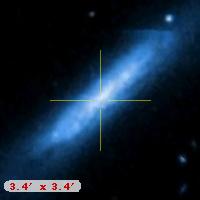
Fornax is a constellation in the southern celestial hemisphere, partly ringed by the celestial river Eridanus. Its name is Latin for furnace. It was named by French astronomer Nicolas Louis de Lacaille in 1756. Fornax is one of the 88 modern constellations.

NGC 1, also occasionally referred to as GC 1, UGC 57, PGC 564 or Holm 2a is an intermediate spiral galaxy of the morphological type Sbc, located approximately 210 to 215 million light-years from the Solar System in the constellation Pegasus. It was discovered on 30 September 1861 by Heinrich d'Arrest.
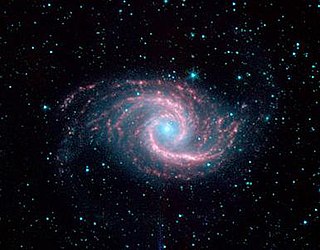
The Dorado Group is a loose concentration of galaxies containing both spirals and ellipticals. It is generally considered a 'galaxy group' but may approach the size of a 'galaxy cluster'. It lies primarily in the southern constellation Dorado and is one of the richest galaxy groups of the Southern Hemisphere. Gérard de Vaucouleurs was the first to identify it in 1975 as a large complex nebulae II in the Dorado region, designating it as G16.

NGC 986 is a barred spiral galaxy in the southern constellation of Fornax, located about 76 million light-years away. It was discovered on August 5, 1826 by the Scottish astronomer James Dunlop, who described it as a "faint nebula, of an irregular round figure". The galaxy has an angular size of 3′.8 × 1′.9 with a visual magnitude of 10.9. It belongs to the Fornax Cluster of galaxies. This galaxy has a nearby companion, NGC 986A, at an angular separation of 17′, corresponding to a projected separation of 110 kpc. The two appear unconnected.

NGC 1380 is a lenticular galaxy located in the constellation Fornax. It is located at a distance of circa 60 million light years from Earth, which, given its apparent dimensions, means that NGC 1380 is about 85,000 light years across. It was discovered by James Dunlop on September 2, 1826. It is a member of the Fornax Cluster.

NGC 1381 is a lenticular galaxy located in the constellation Fornax. It is located at a distance of about 60 million light years from Earth, which, given its apparent dimensions, means that NGC 1381 is about 55,000 light years across. It is a member of the Fornax Cluster. NGC 1381 appears edge-on and features a thin disk with high surface brightness and a boxy bulge. Both the box-shaped bulge and the kinematics of the central area of the galaxy suggest that NGC 1381 has a bar.

NGC 1374 is a low-luminosity elliptical galaxy in the southern constellation Fornax. It was discovered by John Herschel on November 29, 1837.

NGC 1375 is a barred lenticular galaxy in the constellation Fornax discovered by John Herschel on November 29, 1837. It is believed to be a member of the Fornax Cluster.

NGC 1317 is a barred spiral galaxy in the constellation Fornax, in the Fornax cluster. It was discovered by Julius Schmidt on January 19, 1865. It appears to be interacting with the much larger NGC 1316, but uncertainty in distance estimates and scales of tidal distortions make this uncertain. It is a member of the NGC 1316 subgroup, part of the Fornax Cluster. Its size is 2.8' x 2.4' which, at the average distance, gives a diameter of 55,000 light-years.

NGC 1460 is a barred lenticular galaxy in the constellation Eridanus. It was discovered by John Herschel on November 28, 1837. It is moving away from the Milky Way at 1341 km/s.
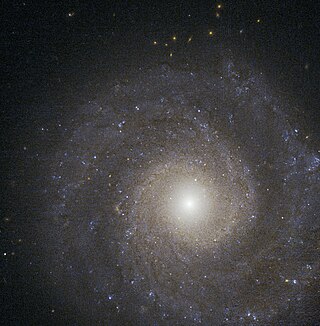
IC 1993 is an intermediate spiral galaxy in the constellation Fornax. It was discovered by Lewis Swift on November 19, 1897. At a distance of about 50 million light-years, and redshift of 1057 km/s, it is one of the closest to us of the 200 galaxies in the Fornax Cluster.
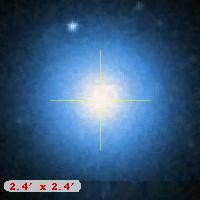
NGC 1379 is a low-luminosity elliptical galaxy in the southern constellation Fornax. It was discovered by William Herschel on December 25, 1835.
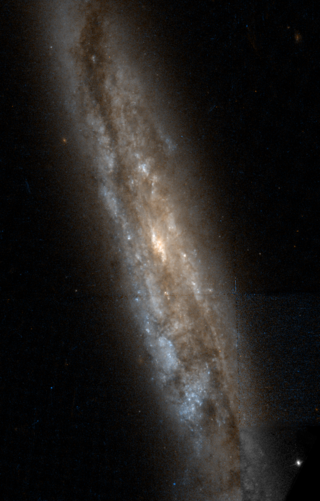
NGC 1406 is almost edge-on barred spiral galaxy in constellation Fornax. It was discovered by John Herschel on 18 November 1835.

NGC 1332 is an almost edge-on elliptical galaxy located in constellation of Eridanus. Situated about 70 million light years away, it is a member of the Eridanus cluster of galaxies, a cluster of about 200 galaxies. It is also the brightest member of the NGC 1332 Group. It was discovered by William Herschel on 9 December 1784.

NGC 1347 is a barred spiral galaxy situated in the constellation of Eridanus. It is at a distance of 81 million light years and is a member of the Eridanus cluster, a cluster of about 200 galaxies.

NGC 1357 is an isolated spiral galaxy situated in constellation of Eridanus. Located about 92 million light years away, it is a member of the Eridanus cluster of galaxies, a cluster of about 200 galaxies, being the farthest known member. Based on location and distance, NGC 1357 is located at the very edge on the Eridanus Cluster. It was discovered by William Herschel on February 1, 1785.

IC 1953 is a barred spiral galaxy situated in the constellation of Eridanus. Located about 86 million light years away, it is a member of the Eridanus cluster of galaxies, a cluster of about 200 galaxies. It was discovered by DeLisle Stewart in 1899.
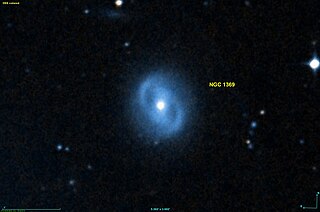
NGC 1369 is a spiral galaxy situated in constellation of Eridanus. Located about 65 million light years away, it is a member of the Fornax cluster of galaxies, a cluster of about 200 galaxies. It was discovered by Julius Schmidt on 19 January 1865.

IC 1913 is a barred spiral galaxy in the constellation Fornax. It belongs to the Fornax Cluster, which contains approximately 200 galaxies.

NGC 1484 is a barred spiral galaxy in the constellation Eridanus, 48 million light-years from Earth. It is part of the Fornax Cluster, that contains approximately 200 galaxies, making it the second richest galaxy cluster in 100 million light-years after the Virgo Cluster.
